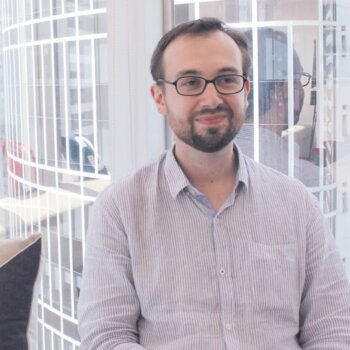About 12 months ago I was all about seeking investment. We had decided that the only way forward for our startup, The Perch Project, was to secure cash investment. That became my top priority. That’s not the offbeat part of the story – many startups reach this point. Most of the time, an injection of cash is needed to expand, develop and/or market the product. Our primary need was development, followed closely by a marketing budget.
We had scraped by up until this point. We had leveraged the FFF network (friends, family & fools – minus the fools in our case) and managed to get a basic MVP operating. We had our B2B-facing auction system developed by a firm specialising in auction software. To save cash, we purchased an ‘off the shelf’ system and paid to have it modified and updated to suit our needs. We had the B2C-facing apps developed (both native iOS and Android, which I’m not sure I would do again) via Upwork. This was a very cheap job and our apps reflected that. Most of our resources went into the auction system, which only our venue clients can see.
I then hit the pavement and painstakingly talked around 50 venues through our vision and signed them up to the system. Excellent. Now we had basic tech, we had a solid base of venue sign-ups. We were just missing something crucial: consumers, customers, a B2C market. Without them, we had no value to offer to our venues. Sure, we had a little cash left to do some basic marketing and we had a couple of media based contacts to do a little initial coverage of our launch. This resulted in a very promising looking spate of downloads. The spate then slowed to a trickle and then something less than that. What to do?
We needed lots of users and we needed them fast. The trouble is, that costs money. Getting your app onto an individual’s phone is far more expensive than it used to be. Back in the ‘good old days’ you could bank on around 30-50c total acquisition cost for each download. This time last year, that cost was more like $1.00-1.20 per download.
A new app just isn’t greeted with the same curiosity and glee (yes, glee – app glee is a thing). To add to the squeeze, we knew that our little apps weren’t going to win any prizes for usability in the near future. We had all the UI/UX designs to fix it but we did not have the funds to develop those fixes. Furthermore, we had a cunning plan around how to growth-hack our user acquisition beyond the app stores, but we needed the development funds to implement it.
So, off I set with a pretty little investor kit tucked under my arm to find us some investment. It did not go well.
Firstly, I hit the pitch circuit. There are a few pitch events in Brisbane that will put you in front of investors. I applied to all of them. I even applied to events in Sydney and Melbourne. This can be a time consuming process. Each event has their own application method and each will have a different focus for the event that you will need to position your pitch to fit into.
Occasionally, I would get through into the live pitching, but mostly I wouldn’t get past the initial application round. Demoralizing? Of course! No one enjoys getting a ‘no,’ but hearing ‘no’ is a big part of having a startup. The result from the live pitching events was the same. No joy on the investment front. (On a side note, live pitching is scary but vital for a startup. Take every opportunity you can to pitch your business.)
Pitch events did not get us the result we needed, so we went to Plan B: VC firms. I arranged meetings with every firm I could. I think I almost saw every firm in Brisbane. I sat down and pitched over coffees and lunches and once to a room of people. I got the same feedback every time: “Well, it’s an interesting idea and you have done well to get to this point but the market is too crowded and you are too early stage.” In hindsight, they were all completely correct. It is a crowded market we are playing in, no doubt about that, and we were very early stage. At the time though, this feedback was very frustrating and, again, demoralizing.
Luckily, we had a Plan C. I went to see high net worth individuals who were not involved in the tech space at all. It was audacious, but this was the last card in our deck. So, off I went with a less tech-focussed investor deck and drank more coffee and ate more lunch. I met some truly impressive people during this time, all of them introduced to me through some well connected friends and family. It was quite a valuable experience spending time with these people and hearing their view on what I had to say and I am grateful for the time they all gave me. However, I couldn’t convince them to open their wallets or ask where to sign. Oh dear. Now we were fresh out of plans.
We still had a deep belief that we were on to something and that we could address a real problem but we had come up against a series of brick walls in the quest to move forward quickly. We resolved to keep pushing on as best we could. We went quiet and kept our heads down to put in more hard yards. And then something happened.
It was around this time that a friend introduced me to another friend of his, thinking that we could somehow work together. He introduced me to the CSO of a small tech company here in Brisbane who has a lot of experience dealing with e-commerce, m-commerce and digital solutions across a bunch of industries. Off the back of this initial introduction we went from chatting about content sharing to working together on a project and finally, he offered to take on all the development work in exchange for equity.
And there it was. We had an investment offer. It wasn’t the sort of investment we had been seeking, but it was almost exactly what we needed to move forward. It was a resource investment offer.
So, of course, I panicked. I went into hyper-worry mode. What if this was the wrong decision? What if this was all part of some dastardly plan to take over my nascent company? What if I lost all control? What if I am not competent enough in the face of this new partnership? Finally, after a good month of sleeplessness I came to the conclusion that this was a time to be brave and take the offer. We needed to move forward and this was the only bridge in sight.
It took longer to get all the formal arrangements in place – enter lawyers – but it got done and we had a shiny new business partner and some kick-ass resources. I have found this new partnership is a lot more than just access to development talent though. What I am finding really valuable is our weekly meetings where I have someone else to strategise with, someone who has a different point of view and whose main concern is moving the company forward. I love having another person who is just as excited about our achievements and who will waste no time in telling me to rein it in when I get too outlandish.
This type of investment didn’t by any means tick all the boxes. We still don’t have a marketing budget and, whereas a regular investment round clarifies a company’s value, this has actually made our company really tricky to value. We also have to be quite strategic in getting our dev work done because there are obviously other projects that our partner’s team needs to work on.
Despite all this, taking on this new partner has been one of the best decisions we ever made for our startup. Since we joined forces, the company has formed new partnerships with some of the most influential digital publications in lifestyle/food in Brisbane. We closed out last month at 30,000 interactions with our feed (as opposed to 1,000 the month before) and our expansion plans are both scalable and achievable. It’s an exciting time.
It may not be the most traditional form of investment, but exchanging equity for resources has meant that the position we’re in now is stronger than it has ever been. And, of course, I’ll always buy that friend who made the crucial introduction a beer when he comes to town.
___________________________
About the Author
This article is written by Simone Perkins, contributor of The Tech Street Journal. Simone is Co-Founder and CEO of The Perch Project. She has had the pleasure of working on Perch within the startup space in Brisbane for the last 3 years. Simone likes to drink shamefully un-craft beer and really dislikes the term ‘CEO’. See more of The Tech Street Journal.





























